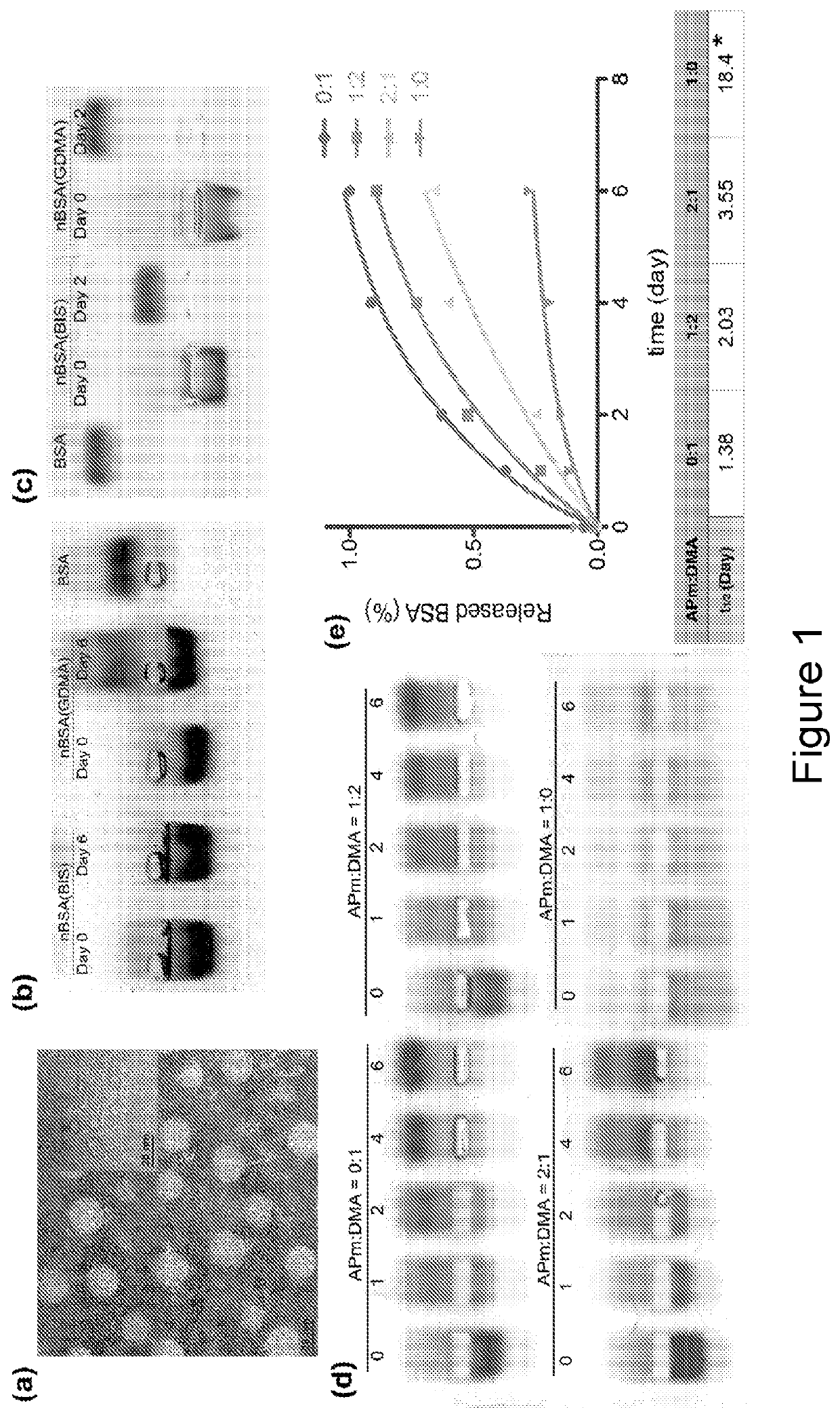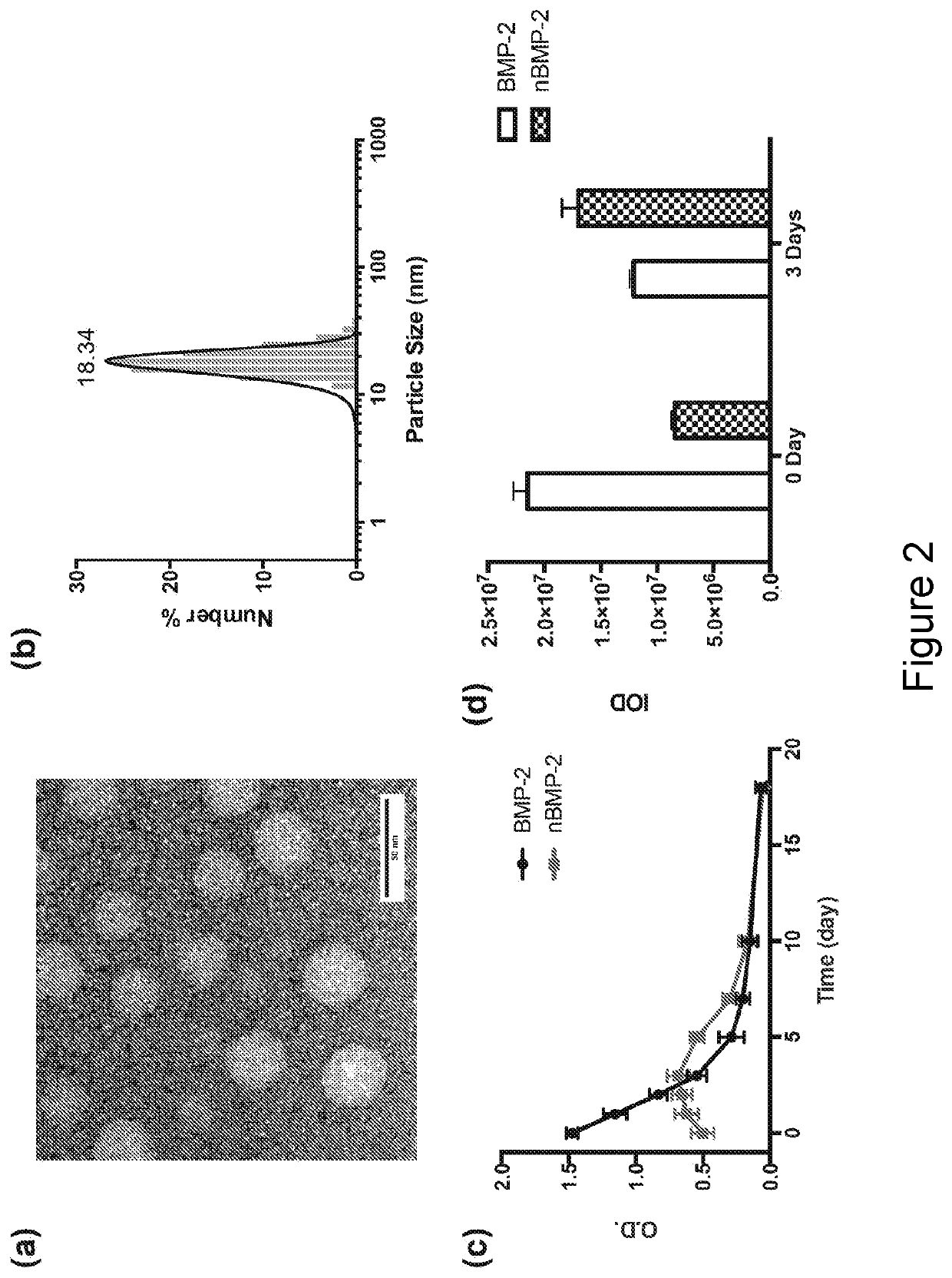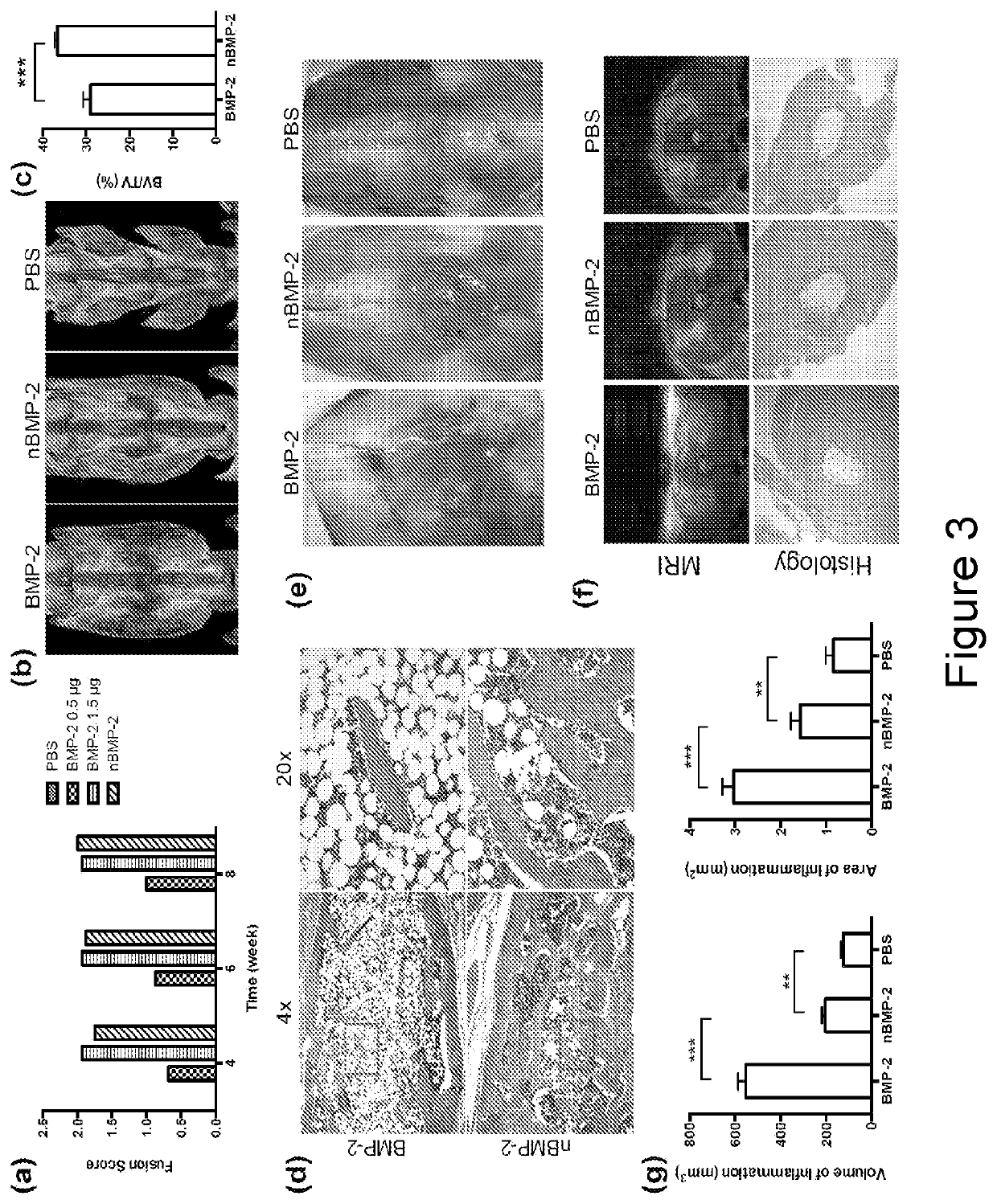Growth-factor nanocapsules with tunable release capability for bone regeneration
a growth factor and nanocapsule technology, applied in the field of nanocapsules, can solve the problems of easy denature of growth factors, crosslinking and conjugation reactions that compromise the activity of growth factors, and the growth factors are mostly unstable and short-lived, so as to improve the therapeutic effect and mitigate side effects
- Summary
- Abstract
- Description
- Claims
- Application Information
AI Technical Summary
Benefits of technology
Problems solved by technology
Method used
Image
Examples
example 1
rum Albumin Nanocapsules (nBSA)
[0040]To demonstrate the synthesis of the nanocapsules with sustained release capability, bovine serum albumin (BSA) was first employed as a model protein. As illustrated in FIG. 7, the synthesis of the nanocapsules (denoted as nBSA) can be achieved by in-situ polymerization at 4° C. Briefly, BSA is firstly incubated with N-(3-aminopropyl) methacrylamide (APm, positively charged monomer), acrylamide (AAm, neutral monomer), and glycerol dimethacrylate (GDMA, degradable crosslinker). Electrostatic interaction and hydrogen-bonding enrich the monomers and crosslinkers around the protein. Free-radical polymerization is then initiated to form a thin layer of polymer network around the protein, leading to the formation of nBSA. In basic environment, the ester bonds in the crosslinker GDMA are gradually cleaved, leading to the dissociation of the polymer shells and the release of the protein cargo. The polymer shell composition can be readily altered to finely...
example 2
hogenetic Protein-2 Nanocapsules (nBMP-2)
[0045]To translate this technology for BMP-2 mediated bone regeneration, a slow process that typically takes about 4-8 weeks, nanocapsule composition with slow release kinetics was chosen. In particular, BMP-2 nanocapsules (denoted as nBMP-2) were prepared with AAm and APm as the monomers and GDMA as the crosslinker.
[0046]A TEM image of nBMP-2 (FIG. 2A) shows spherical morphology with an average diameter of around 20 nm, in consistence with the DLS measurement (FIG. 2B). FIG. 2C shows the release profile of BMP-2 (represented as optical density, OD) by enzyme-linked immunosorbent assay (ELISA) after incubating nBMP-2 in borate buffer (pH 8.5). For comparison, native BMP-2 with the same concentration was also incubated in borate buffer. The effective concentration of native BMP-2 declines significantly with incubation time, which is consistent with its poor stability. In contrast, effective BMP-2 concentration of the nBMP-2 sample remains at a...
example 3
[0052]All chemicals were purchased from Sigma-Aldrich unless otherwise noted, and were used as received. Cal-Ex decalcifying solution was purchased from Fisher Scientific (Fairlawn, N.J.). N-(3-Aminopropyl) methacrylamide was purchased from PolySciences, Inc (Warrington, Pa.). All cells were obtained from ATCC (Manassas, Va.). Cell culture dishes were purchased from Fisher Scientific (Pittsburgh, Pa.). All cell culture medium was purchased from Invitrogen (Grand Island, N.Y.). BMP-2 protein was obtained from Medtronic (Minneapolis, Minn.). BMP-2 ELISA Kit was purchased from R&D Systems, Inc (MN, USA). Alkaline Phosphatase kit was purchased from Sigma-Aldrich. Helistat collagen sponge was purchased from Integra Life Sciences (Plainsboro, N.J.). All sutures were purchased from Ethicon Inc. (Somerville, N.J.). All animals were purchased from Charles River Laboratories (Hollister, Calif.).
PUM
| Property | Measurement | Unit |
|---|---|---|
| Fraction | aaaaa | aaaaa |
| Fraction | aaaaa | aaaaa |
| Time | aaaaa | aaaaa |
Abstract
Description
Claims
Application Information
 Login to View More
Login to View More - R&D
- Intellectual Property
- Life Sciences
- Materials
- Tech Scout
- Unparalleled Data Quality
- Higher Quality Content
- 60% Fewer Hallucinations
Browse by: Latest US Patents, China's latest patents, Technical Efficacy Thesaurus, Application Domain, Technology Topic, Popular Technical Reports.
© 2025 PatSnap. All rights reserved.Legal|Privacy policy|Modern Slavery Act Transparency Statement|Sitemap|About US| Contact US: help@patsnap.com



